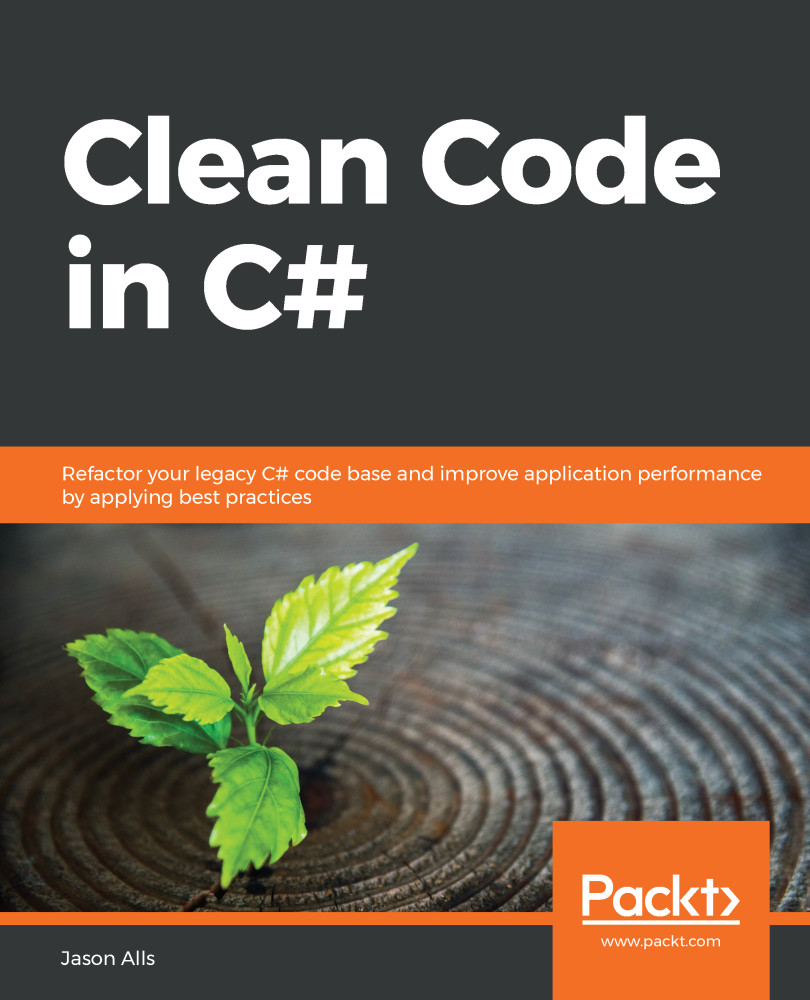The primary goal of coding standards and principles in C# is for programmers to become better at their craft by programming code that is more performant and easier to maintain. In this chapter, we will look at some examples of good code contrasted with examples of bad code. This will lead nicely into discussing why we need coding standards, principles, and methodologies. We will then move on to consider conventions for naming, commenting, and formatting source code, including classes, methods, and variables.
A big program can be rather unwieldy to understand and maintain. For junior programmers, getting to know the code and what it does can be a daunting prospect. Teams can find it hard to work together on such projects. And from a testing viewpoint, it can make things rather difficult. Because of this, we will look at how you use modularity to break programs down into smaller modules that all work together to produce a fully functioning solution that is also fully testable, can be worked on by multiple teams simultaneously, and is much easier to read, understand, and document.
We will finish the chapter off by looking at some programming design guidelines, mainly, KISS, YAGNI, DRY, SOLID, and Occam's Razor.
The following topics will be covered in this chapter:
- The need for coding standards, principles, and methodologies
- Naming conventions and methods
- Comments and formatting
- Modularity
- KISS
- YAGNI
- DRY
- SOLID
- Occam's Razor
The learning objectives for this chapter are for you to do the following:
- Understand why bad code negatively impacts projects.
- Understand how good code positively impacts projects.
- Understand how coding standards improve code and how to enforce them.
- Understand how coding principles enhance software quality.
- Understand how methodologies aid the development of clean code.
- Implement coding standards.
- Choose solutions with the least assumptions.
- Reduce code duplication and write SOLID code.



